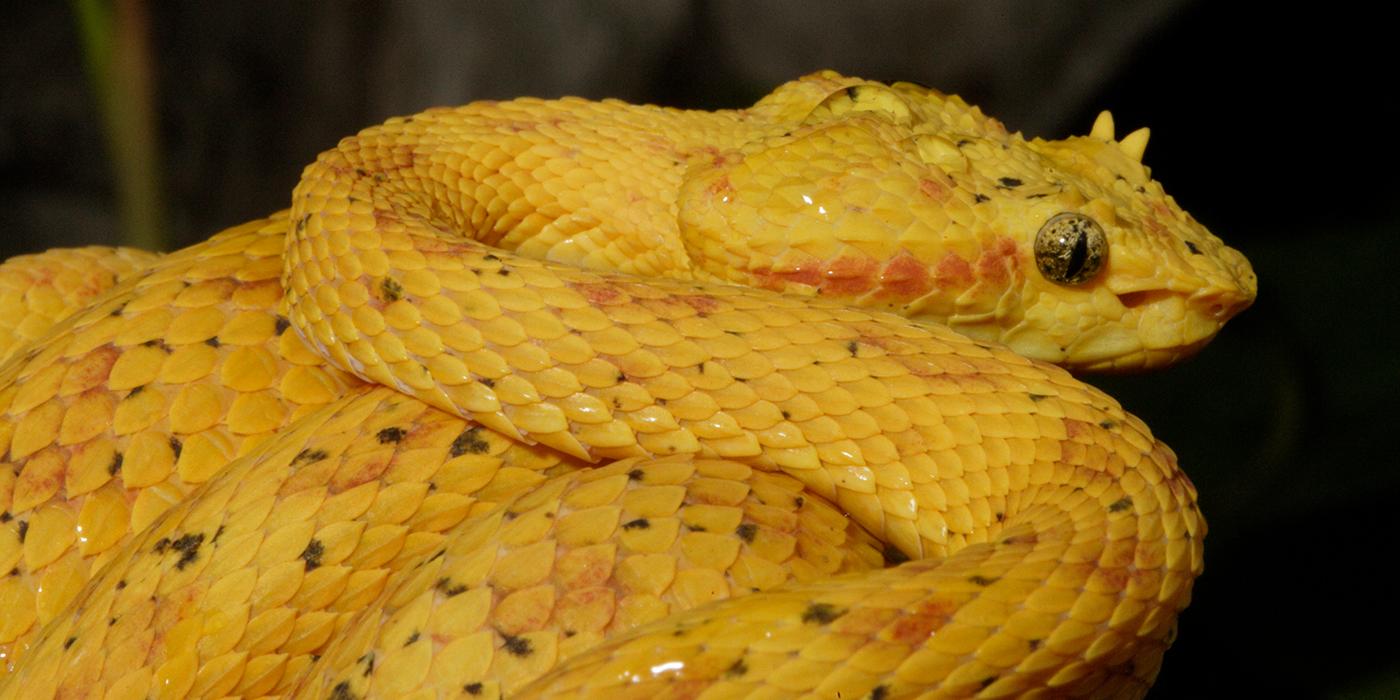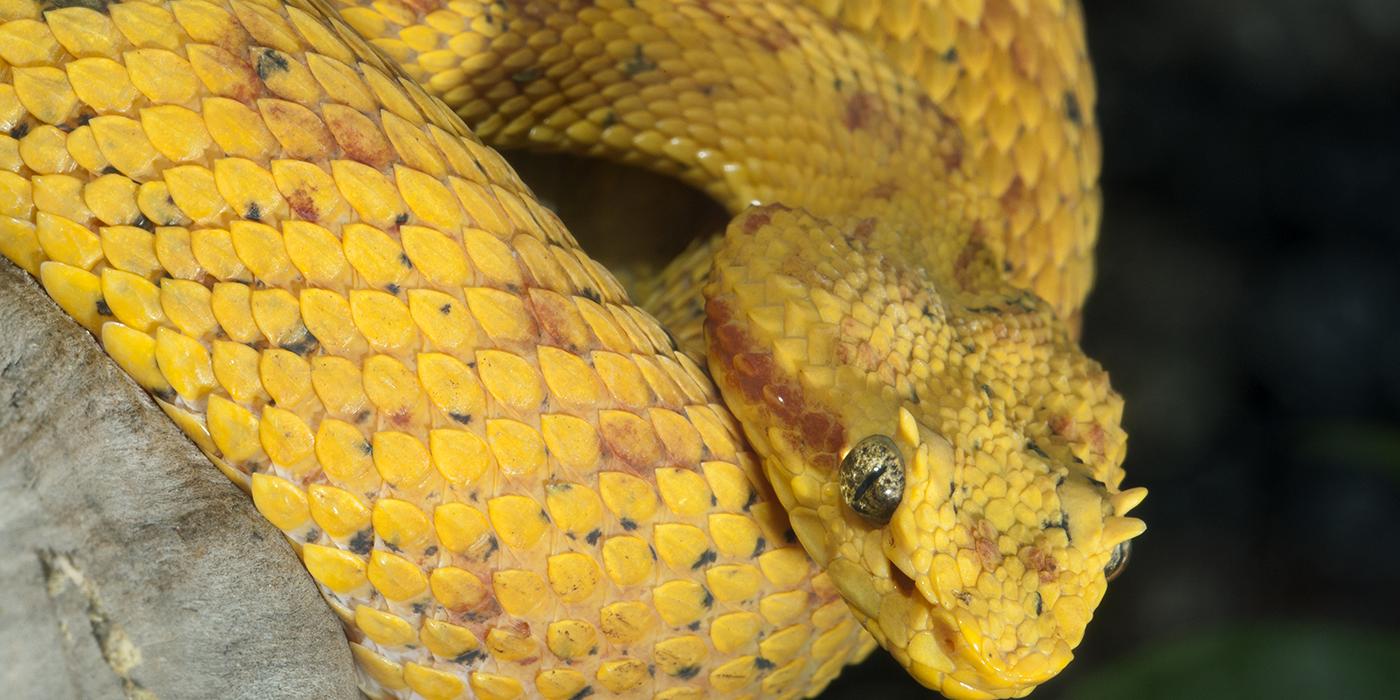
Exploring the Enigmatic Eyelash Palm Pitviper: Beauty and Venom in the Rainforest Canopy
The Eyelash Palm Pitviper (Bothriechis schlegelii), also known as the Eyelash Viper, is a mesmerizing yet venomous snake species found in the lush rainforests of Central and South America. With its striking appearance, characterized by vibrant colors and distinctive scales, the Eyelash Palm Pitviper serves as both a fascinating subject of study for herpetologists and a symbol of the diverse ecosystems of the tropical canopy. In this article, we delve into the captivating world of the Eyelash Palm Pitviper, exploring its appearance, habitat, behavior, and significance in the rainforest ecosystem.
Appearance and Characteristics: The Eyelash Palm Pitviper is named for the distinctive scales above its eyes, which resemble eyelashes and give the snake a uniquely captivating appearance. These scales, along with its vibrant coloration and intricate patterns, serve as camouflage in the dappled sunlight and dense foliage of the rainforest canopy. The snake’s coloration can vary widely, ranging from shades of green and yellow to vibrant hues of red and orange, providing effective camouflage and making it a master of stealth in its arboreal habitat.
Habitat and Distribution: Eyelash Palm Pitvipers are primarily found in the lowland and montane rainforests of Central and South America, including countries such as Costa Rica, Panama, Colombia, Ecuador, and Venezuela. They are arboreal by nature, spending much of their time perched in the branches of trees and shrubs, where they wait patiently for prey to pass by. These snakes are well adapted to life in the canopy, using their prehensile tails and specialized scales to grip onto branches and navigate the dense vegetation with ease.

Behavior and Diet: As ambush predators, Eyelash Palm Pitvipers rely on stealth and camouflage to capture their prey, which primarily consists of small mammals, birds, lizards, and amphibians. They possess heat-sensitive pits located between their eyes and nostrils, which allow them to detect the infrared radiation emitted by warm-blooded animals, helping them locate prey even in low light conditions. Once prey is detected, the snake strikes with lightning speed, injecting venom through its fangs to immobilize and subdue its victim before swallowing it whole.
Conservation Status: While the Eyelash Palm Pitviper is not currently listed as threatened or endangered, it faces ongoing threats from habitat destruction, deforestation, and human encroachment. Loss of habitat due to agricultural expansion, logging, and urbanization poses a significant risk to the long-term survival of this species and other rainforest inhabitants. Conservation efforts focused on habitat protection, sustainable land management, and public education are essential for preserving the biodiversity of tropical rainforests and ensuring the survival of species like the Eyelash Palm Pitviper.

Conclusion: The Eyelash Palm Pitviper is a captivating and enigmatic species that plays a vital role in the delicate balance of the rainforest ecosystem. With its stunning appearance, specialized adaptations, and important ecological niche, this snake serves as a reminder of the beauty and complexity of tropical rainforests and the need for conservation efforts to protect these valuable habitats. By raising awareness, supporting conservation initiatives, and fostering appreciation for the wonders of nature, we can ensure a brighter future for the Eyelash Palm Pitviper and other species that call the rainforest canopy home.





